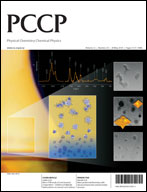Insight into the relative reactivity of “Frustrated Lewis pairs” and stable carbenes in activating H2 and CH4: A comparative computational study†
Abstract
Computational study has been conducted to gain insight into the relative reactivity of stable carbenes (1 and 2) and typical frustrated Lewis pairs (FLPs, 3–6) in activating H2 and CH4. For the


 Please wait while we load your content...
Please wait while we load your content...